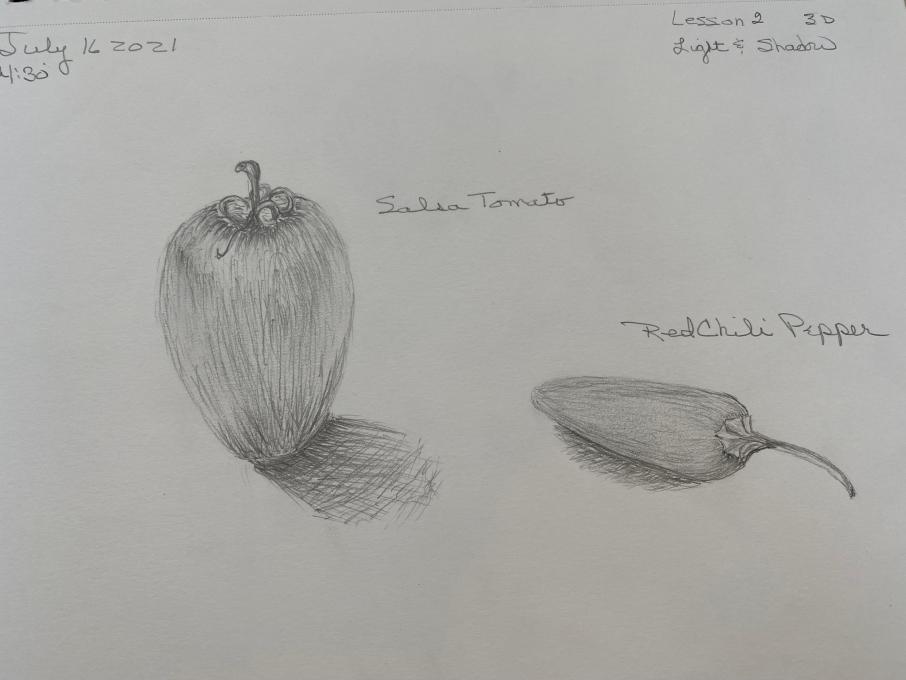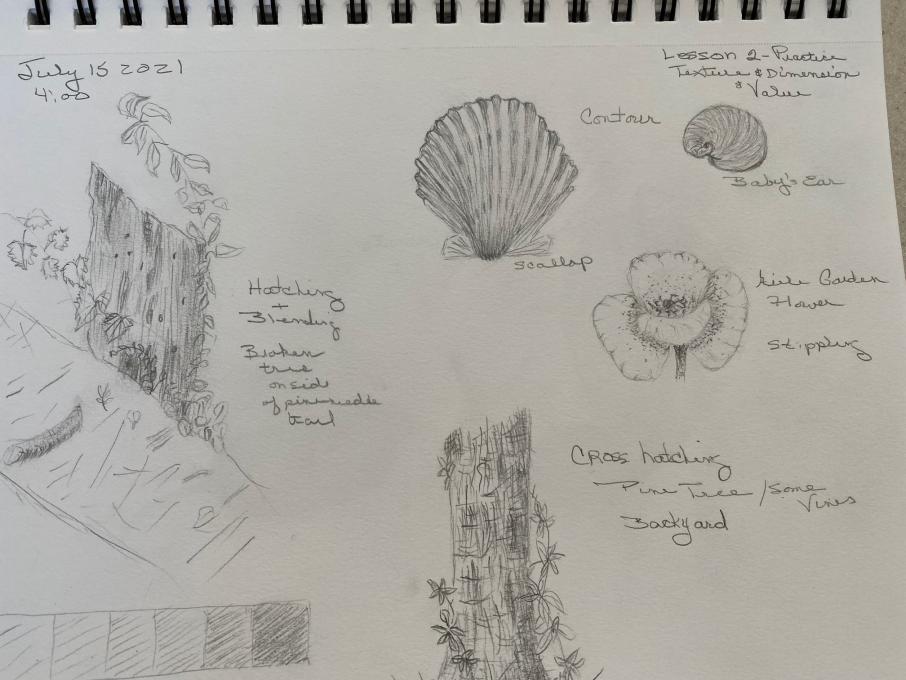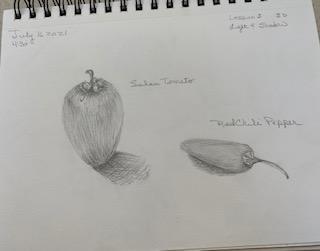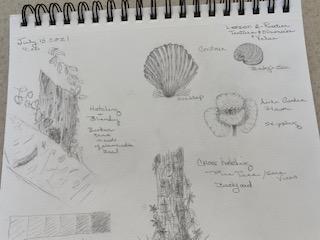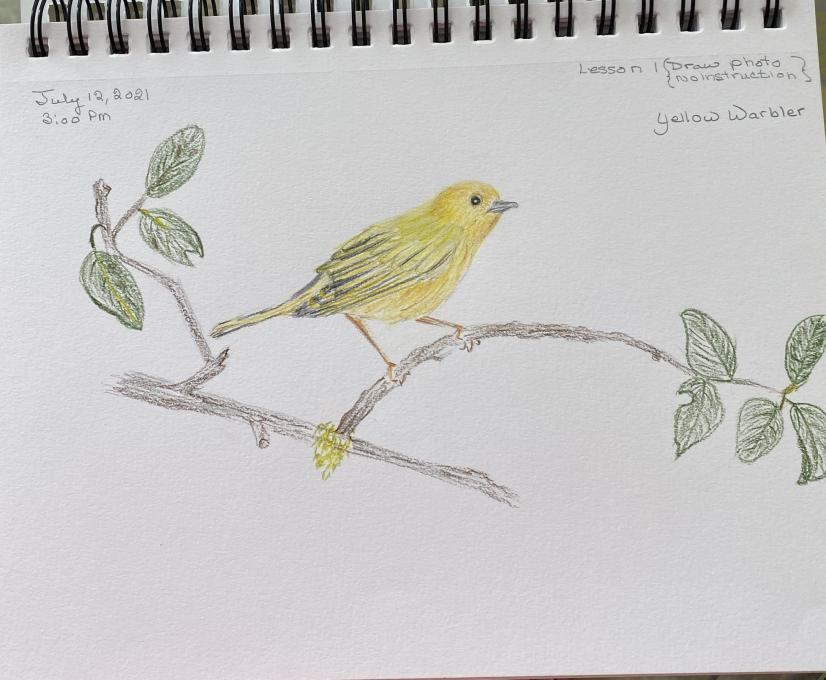Jacqueline
Forum Replies Created
Viewing 14 posts - 1 through 14 (of 14 total)
-
JacquelineParticipantI would say the two most helpful techniques refining the sketch were proportion and negative space as not only in the drawing but also in the adding details of the seagull sketch I
 was doing. The shading helped with depth and bringing out the wings. Proportion was so helpful in getting body length, head and legs in sync. in reply to: Giving Your Drawings Depth #838328
was doing. The shading helped with depth and bringing out the wings. Proportion was so helpful in getting body length, head and legs in sync. in reply to: Giving Your Drawings Depth #838328 -
JacquelineParticipantThe activity drawing upside down was both difficult and fun. It most definitely required slow short strokes and frequent looking at the picture as I attempted the assignment. It was a lot to incorporate proportion and negative space while drawing some of the more complicated and intricate parts of the bird and stock.It did take some time and erasing as I went along.
 in reply to: Drawing What You See – Upside Down Drawing #838306
in reply to: Drawing What You See – Upside Down Drawing #838306 -
JacquelineParticipantUsing the technique of pencil and ruler to measure was so helpful. While drawing the praying mantis,I don't think I Would have come close to getting all the parts of the mantis in proportion to each other. I used the head to base my measurements on for the thorax, abdomen and legs. The praying mantis was very slow moving and climbed right up onto my journaling sketchbook. I was then able to snap a few pictures that helped me use my pencil and ruler for sizing. When doing the sketch of the praying mantis I referred to the picture I took and that helped immensely with negative space.So all in all I think the proportion is fairly close to being accurate but it will certainly take much more practice to become more proficient. so all in all I think the proportion is fairly close to being accurate but it will certainly take much more practice to become more proficient
 in reply to: Getting the Proportions Right #838240
in reply to: Getting the Proportions Right #838240 -
JacquelineParticipantI found most helpful to sketch in snap shot like style, meaning that I sketch a body part, for instance like the leg, or head, or body. Since the bird I was sketching was moving rather quickly, it was easier to just get a little sections of the bird and then try to get the whole body.This way I was able to notice more detail in the quick sketch of the legs and how they were joined the position of the head, and the long beak attachment to the head. I definitely have a ways to go but it’s a good beginning.
 in reply to: Capturing Behavior – Gesture Drawing #833203
in reply to: Capturing Behavior – Gesture Drawing #833203 -
JacquelineParticipantYikes! This was a challenge. I can see this would be helpful in the field when you don’t have much time to capture the image. Just get the shape and then the details as much as possible considering the subject may be passing thruin reply to: Focusing on Your Subject – Blind Contour Drawing #832778
-
JacquelineParticipantThis comparison lesson was helpful in focusing and noticing details. I compared two different pepper plants. The obvious differences were how they grew (one up, one down), size (one very small, one much larger). Some similarities were leaves (both smooth), shape (both elongated oval; however different sizes). Some less obvious details were the flower on the red pepper plant. At first I didn’t even see the tiny flower as it was covered by a leaf. With a closer look at the flower, I noticed one taller white carpel in the center surrounded by 5 green stamen. Also how the leaves, although same shape, attached differently to the plant.
 in reply to: The Power of Comparison #832762
in reply to: The Power of Comparison #832762 -
JacquelineParticipant
 in reply to: Noticing Themes in Nature #832408
in reply to: Noticing Themes in Nature #832408 -
JacquelineParticipant
 My sit spot was from my back deck looking out to yard and woods behind. Liz was so right sitting and being quiet in my space opened senses. Even though it has stormed and continued to rain for days, I wondered if perhaps I should pick another day. The rain probably made the time of observation a little more focused. At first no birds heard or seen but noises in the environment were more easily picked up… and even noticed the quietness. So I observed some cone flowers and hydrangeas that are fading from the early summer glory. After about 30 minutes I heard some birds and “ Merlin “ helped me identify red bellied woodpecker and the a blue jay. And then as I was looking for the woodpecker, some movement mid way up a vey tall pine (30 ft or more) caught my eye. I grabbed my binoculars and there sitting in a pine branch was a barred owl 🦉 AMAZING! A mockingbird looked like it was harassing the owl and the owl took flight. It kept low, and swooped into the woods. So cool to see — and I would have missed it if I hadn’t been doing “sit/observe”. in reply to: Opening Your Senses #830491
My sit spot was from my back deck looking out to yard and woods behind. Liz was so right sitting and being quiet in my space opened senses. Even though it has stormed and continued to rain for days, I wondered if perhaps I should pick another day. The rain probably made the time of observation a little more focused. At first no birds heard or seen but noises in the environment were more easily picked up… and even noticed the quietness. So I observed some cone flowers and hydrangeas that are fading from the early summer glory. After about 30 minutes I heard some birds and “ Merlin “ helped me identify red bellied woodpecker and the a blue jay. And then as I was looking for the woodpecker, some movement mid way up a vey tall pine (30 ft or more) caught my eye. I grabbed my binoculars and there sitting in a pine branch was a barred owl 🦉 AMAZING! A mockingbird looked like it was harassing the owl and the owl took flight. It kept low, and swooped into the woods. So cool to see — and I would have missed it if I hadn’t been doing “sit/observe”. in reply to: Opening Your Senses #830491 -
JacquelineParticipant
 in reply to: Illustrating the 3D World #826918
in reply to: Illustrating the 3D World #826918 -
JacquelineParticipant
 in reply to: Illustrating the 3D World #826916
in reply to: Illustrating the 3D World #826916 -
JacquelineParticipantIt is getting a bit more obvious where light and shadow appear on an object. Now, to work on the gradients of shading.

 in reply to: Illustrating the 3D World #826910
in reply to: Illustrating the 3D World #826910 -
JacquelineParticipant
 in reply to: Jump Right in! #826350
in reply to: Jump Right in! #826350 -
JacquelineParticipantIt was a fun task. Getting the different layers of feathers is a challenge. And proportion along with details offer their own difficulty for me. With the picture to refer to is absolutely a help and I can imagine trying to draw this bird as it is moving, standing still only a short time will need some good advice.in reply to: Jump Right in! #826315
-
JacquelineParticipantI became interested a few months ago after putting up a couple of birdfeeders in the backyard and then trying to identify the birds as they came to feed. I have been an instructor for marine education on a barrier island for school groups, so I am very familiar with our coastal birds here in North Carolina. But backyard birds (inland birds too) not so much. so after observing birds more carefully for colors and shapes and habits for ID ( using eBird and Merlin)I started to really pay attention to what was round. While out on hikes and runs through local parks and trails, I would come along some flower or bird and stop to take a picture and try to ID it, if I didn’t know it. Or just take a picture of it because I wanted a record of it. I saw a short video of you talking about nature journaling and just thought it would a good next step. I guess you can say, I am inspired by nature and Liz. Oh, and Robert Johnson. He has an exhibit of his work in gauache & colored pencils of North Carolina natural habitats at our local art museum. His notebook with field sketches and notes that are used, are displayed for each particular work.So, I am a beginner with no drawing skills, ready and eager to get started. My style is not set. I like your and one of the first girl’s( Shanya)preference for page set up. We’ll see.in reply to: Style Your Journal Your Way #826260
Viewing 14 posts - 1 through 14 (of 14 total)
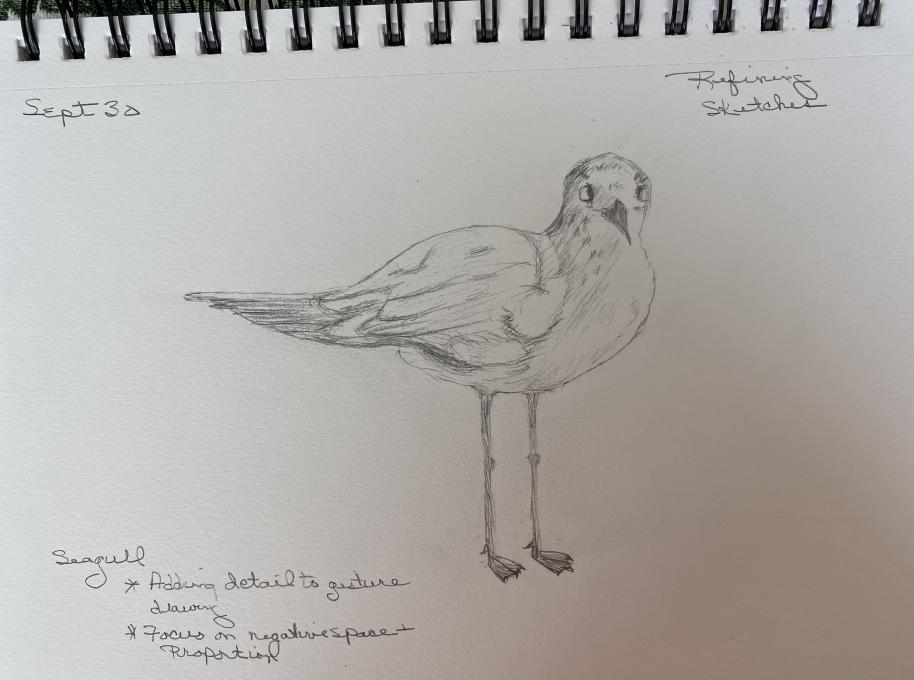 was doing. The shading helped with depth and bringing out the wings. Proportion was so helpful in getting body length, head and legs in sync.
was doing. The shading helped with depth and bringing out the wings. Proportion was so helpful in getting body length, head and legs in sync. 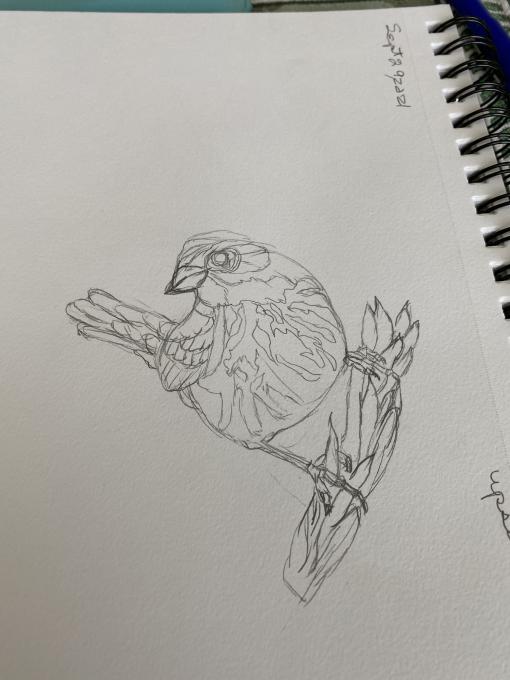

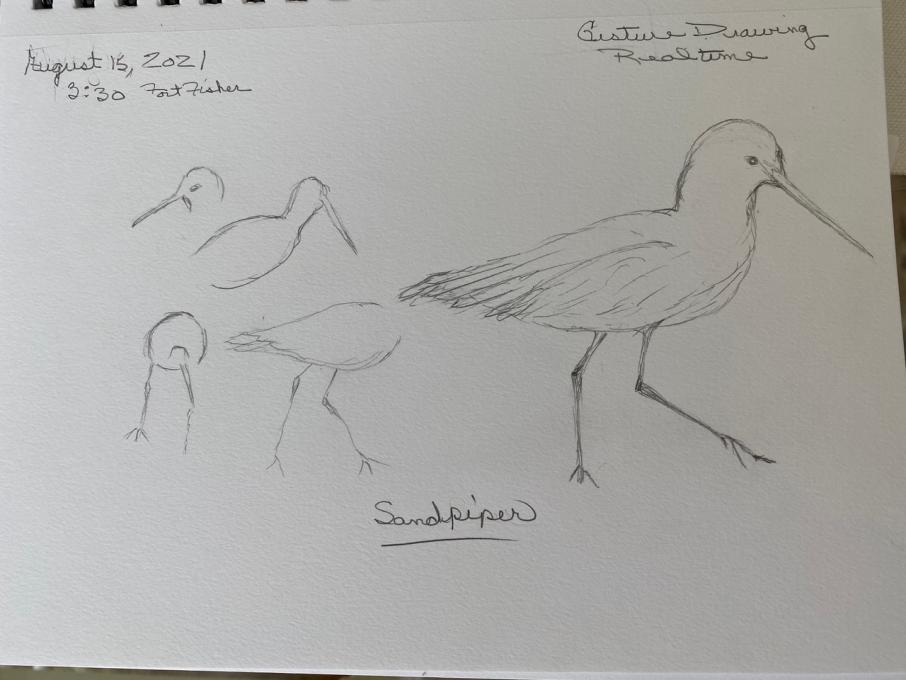
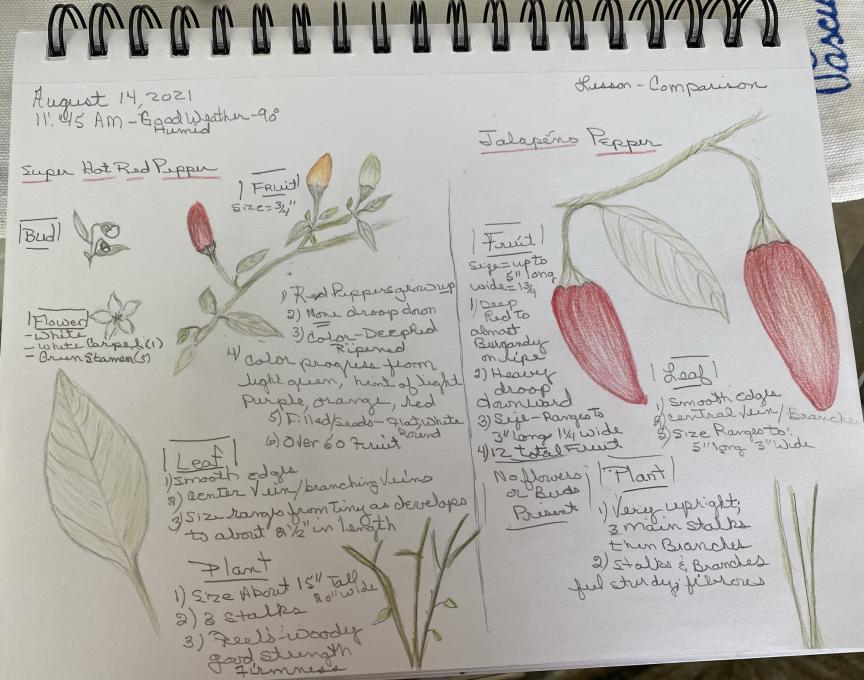
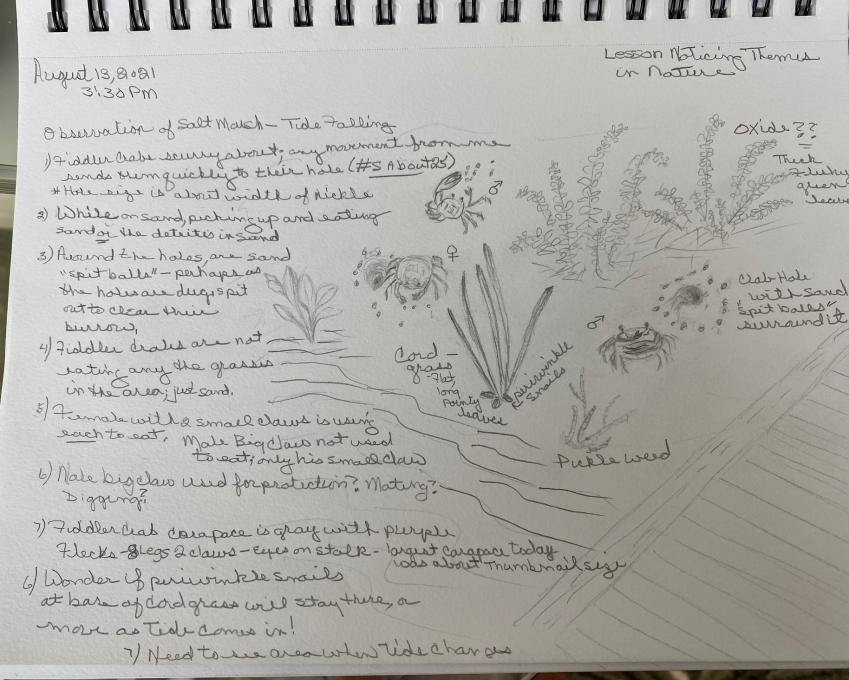
 My sit spot was from my back deck looking out to yard and woods behind. Liz was so right sitting and being quiet in my space opened senses. Even though it has stormed and continued to rain for days, I wondered if perhaps I should pick another day. The rain probably made the time of observation a little more focused. At first no birds heard or seen but noises in the environment were more easily picked up… and even noticed the quietness. So I observed some cone flowers and hydrangeas that are fading from the early summer glory. After about 30 minutes I heard some birds and “ Merlin “ helped me identify red bellied woodpecker and the a blue jay. And then as I was looking for the woodpecker, some movement mid way up a vey tall pine (30 ft or more) caught my eye. I grabbed my binoculars and there sitting in a pine branch was a barred owl 🦉 AMAZING! A mockingbird looked like it was harassing the owl and the owl took flight. It kept low, and swooped into the woods. So cool to see — and I would have missed it if I hadn’t been doing “sit/observe”.
My sit spot was from my back deck looking out to yard and woods behind. Liz was so right sitting and being quiet in my space opened senses. Even though it has stormed and continued to rain for days, I wondered if perhaps I should pick another day. The rain probably made the time of observation a little more focused. At first no birds heard or seen but noises in the environment were more easily picked up… and even noticed the quietness. So I observed some cone flowers and hydrangeas that are fading from the early summer glory. After about 30 minutes I heard some birds and “ Merlin “ helped me identify red bellied woodpecker and the a blue jay. And then as I was looking for the woodpecker, some movement mid way up a vey tall pine (30 ft or more) caught my eye. I grabbed my binoculars and there sitting in a pine branch was a barred owl 🦉 AMAZING! A mockingbird looked like it was harassing the owl and the owl took flight. It kept low, and swooped into the woods. So cool to see — and I would have missed it if I hadn’t been doing “sit/observe”. 